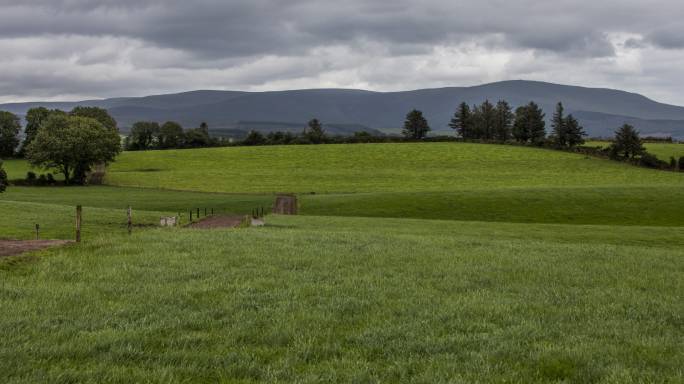Managing various grazing scenarios

The long awaited dry and settled period is set to bring more normality to grazing.
There is variation in percentages grazed throughout the country depending on land type, rainfall and grazing infrastructure. With temperatures increasing, grass growths rising and ground conditions improving it will be a challenge to keep pre-grazing covers right as we head into May and June. Depending on percentages grazing decisions need to be made ensure sufficient high quality grass to maintain milk yields and for the breeding season.
No grazing to date:
- Conditions can turn quickly on some paddocks. Walk the farm and identify the driest paddocks to graze first.
- If possible graze the lowest covers first. If looking at the grass wedge this means grazing the wedge from the bottom up. This increases the percentage area grazed as quickly as possible through higher area allocations while limiting damage.
- Graze by day initially, challenging grazing conditions practice on/off grazing (3 hour allocations) where possible -use strip wires and spur roadways
- Skip the heaviest covers. Roughly 30% of the grazing platform and remove as surplus bales in late April/early May. Do not wait to include these paddocks for the pit. (Unless doing an early 1st cut). These paddocks need to come back into the rotation as quickly as possible
Less than 30% grazed:
- Graze the lowest covers first. If looking at the grass wedge this means grazing the wedge from the bottom up. This increases the percentage area grazed as quickly as possible through higher area allocations while limiting damage.
- If grazing by day, aim to get back out for a 2nd grazing in the afternoon as the weather starts to improve. Farms who are settled at grass should consider 24-36 hour allowances now.
- Skip the heaviest covers. Roughly 25-30% of the grazing platform and remove as surplus bales in late April early May. Do not wait to include these paddocks for the pit. These paddocks need to come back into the rotation as quickly as possible
- Measure grass regularly to decide when to start 2nd rotation
>80% grazed
- Once 1200 kg DM/ha is on the first 3 paddocks skip to these paddocks and start the second rotation if ground conditions allow. Avoid damage within the 2nd rotation as it will impact regrowth
- If not 1st rotation needs to be extend the through the use of concentrates, straights & silage.
- Vital to keep measuring to monitor grass covers on first paddocks grazed and keep an eye on average farm cover (AFC)
2nd rotation started:
- Target AFC is 550-600 Kg DM/ha. Ensure not to drop below this as it will impact growth rates. Match growth with herd demand to maintain AFC >550 kgDM/ha
- Ground conditions tender on some farms where paddocks were grazed and badly marked and are now easy to damage.
- Mix and match paddocks from the 1st rotation and the 2nd rotation to avoid damage. Even if paddocks were ear marked for bales or silage. Damaging paddocks a second time may impact grass yields for the remainder of the year.
Apply chemical N fertiliser at a rate of 23-30 units N/ac in the form of 18-6-12 +S ( if you have P allowance/slurry not applied) or Pro. Urea + S when conditions allow this week on grazing ground. Some land will still be too wet, but aim to get your drier ground back on track. Response to chemical N is highest in the months of April, May and June.
If you require any further support, do not hesitate to contact your local Tirlán Representative or local advisor.
First Published 18 April
Tagged with: Dairy
